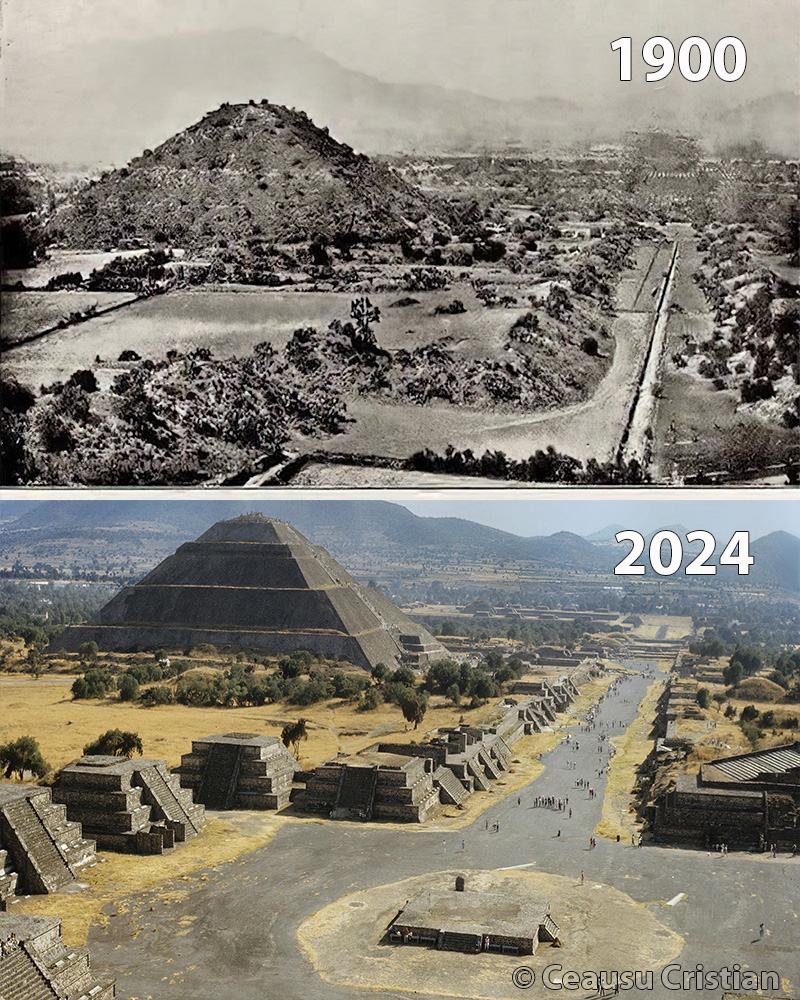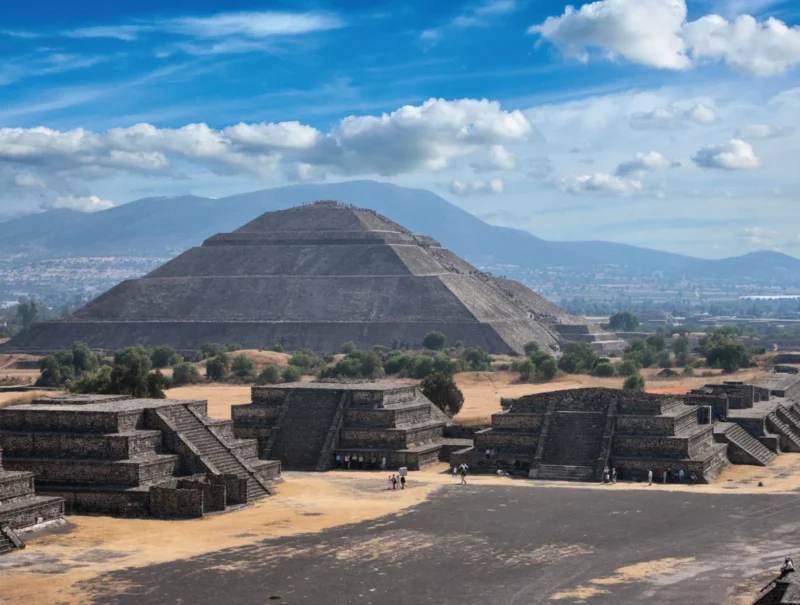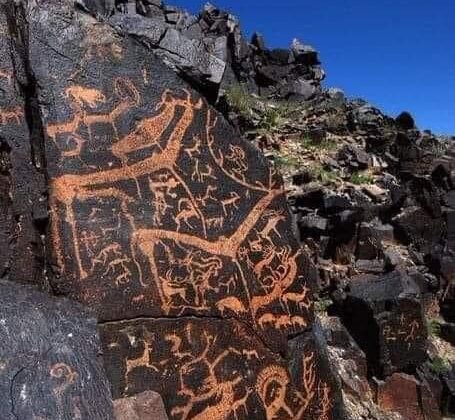Located about 30 miles northeast of Mexico City, Teotihuacan stands as one of the most impressive and enigmatic archaeological sites in the Americas. This ancient metropolis, whose name means “place where gods were created” in the Aztec language, flourished between 100 BCE and 750 CE, long before the rise of the Aztec Empire.
At its peak around 450 CE, Teotihuacan was the largest city in the pre-Columbian Americas, covering nearly eight square miles and housing an estimated population of 125,000 to 200,000 people. The city’s influence extended far beyond its borders, shaping the cultural and artistic development of Mesoamerica for centuries.
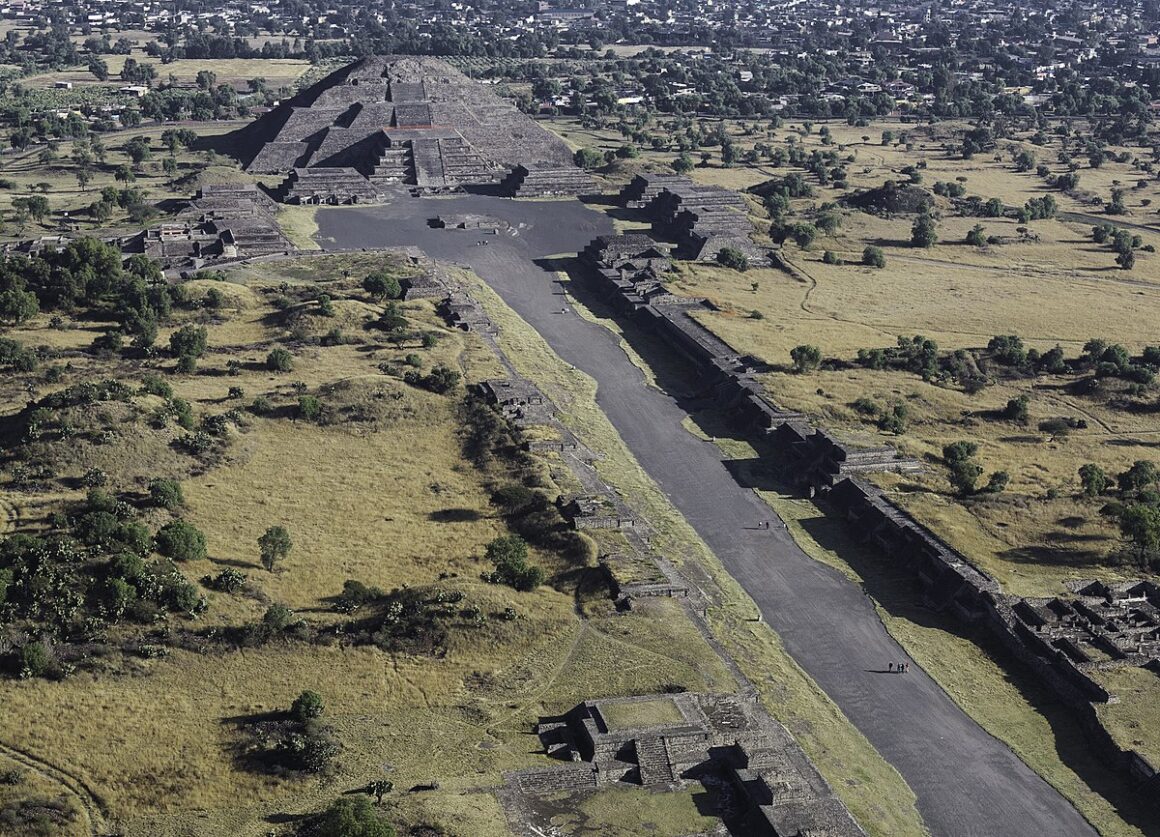
The site is dominated by monumental architecture, most notably the massive Pyramid of the Sun and Pyramid of the Moon. The Pyramid of the Sun, standing at 216 feet (66 meters) high, is the third-largest pyramid in the world. These structures are connected by the Avenue of the Dead, a 1.5-mile-long (2.4 km) central axis that runs through the heart of the city.
Teotihuacan’s urban planning is remarkably sophisticated, with a grid system oriented 15.5 degrees east of true north. This layout, which includes numerous plazas, temples, and residential compounds, demonstrates advanced knowledge of astronomy and engineering.
The city’s architecture is characterized by the talud-tablero style, featuring sloping lower walls topped by vertical panels. Many buildings were once covered in elaborate murals, some of which are still visible today. These murals, along with other artifacts found at the site, reveal a complex cosmology and belief system.
One of the most intriguing structures is the Temple of the Feathered Serpent, adorned with carved serpent heads and believed to be dedicated to the god Quetzalcoatl. Excavations here have uncovered evidence of mass human sacrifices, hinting at the city’s dark religious practices.
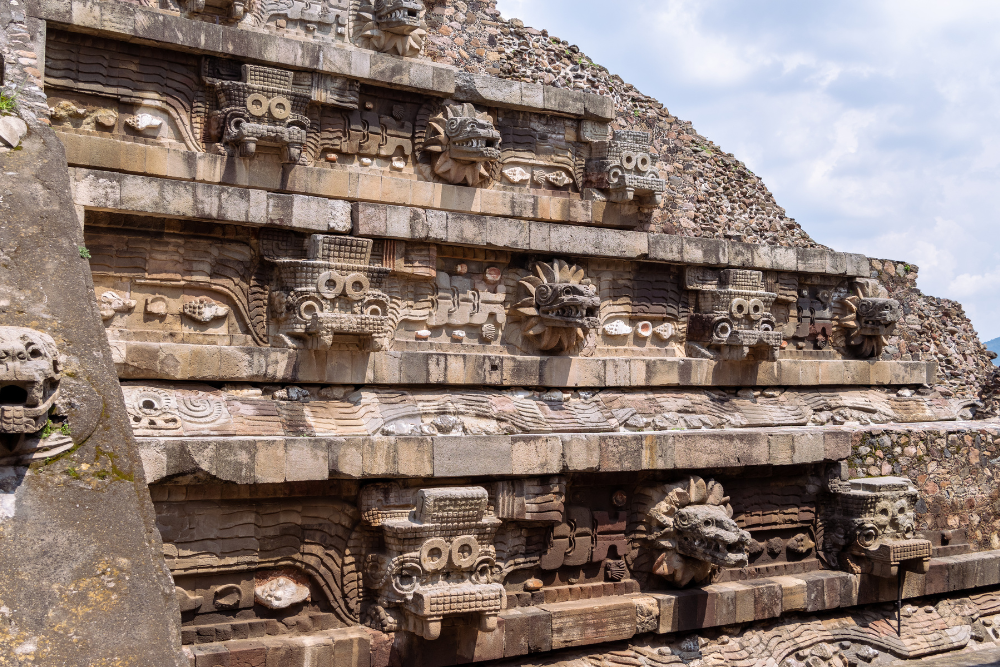
Despite its grandeur, much about Teotihuacan remains a mystery. The ethnic identity of its founders is unknown, as is the reason for the city’s eventual decline and abandonment around 750 CE. Evidence suggests that internal unrest, possibly exacerbated by environmental factors, led to the city’s downfall.
Today, Teotihuacan is a UNESCO World Heritage site and one of Mexico’s most visited archaeological parks. Ongoing excavations continue to reveal new insights into this ancient city, while its towering pyramids and sprawling avenues continue to awe visitors, offering a tangible link to a distant, magnificent past.
